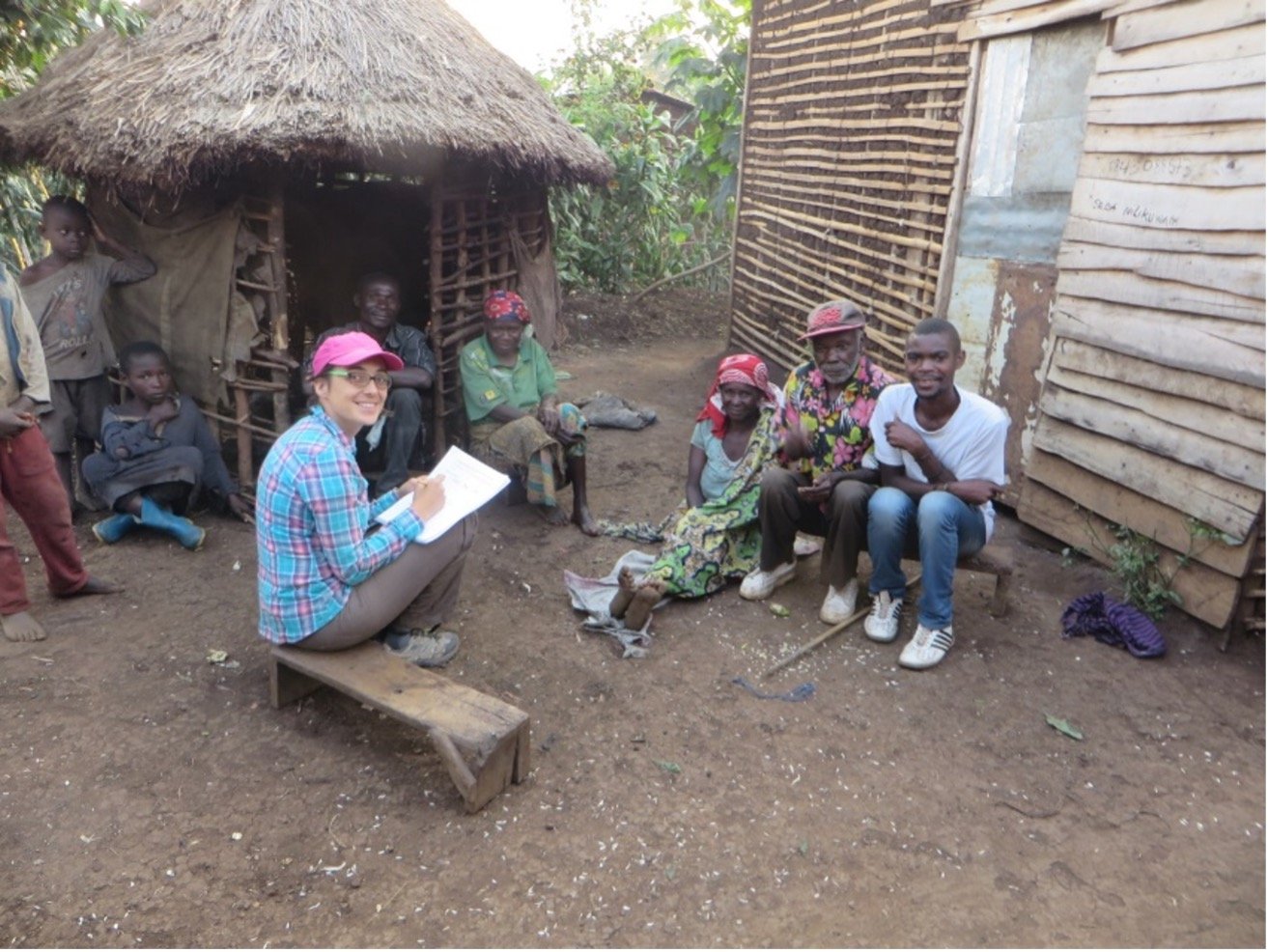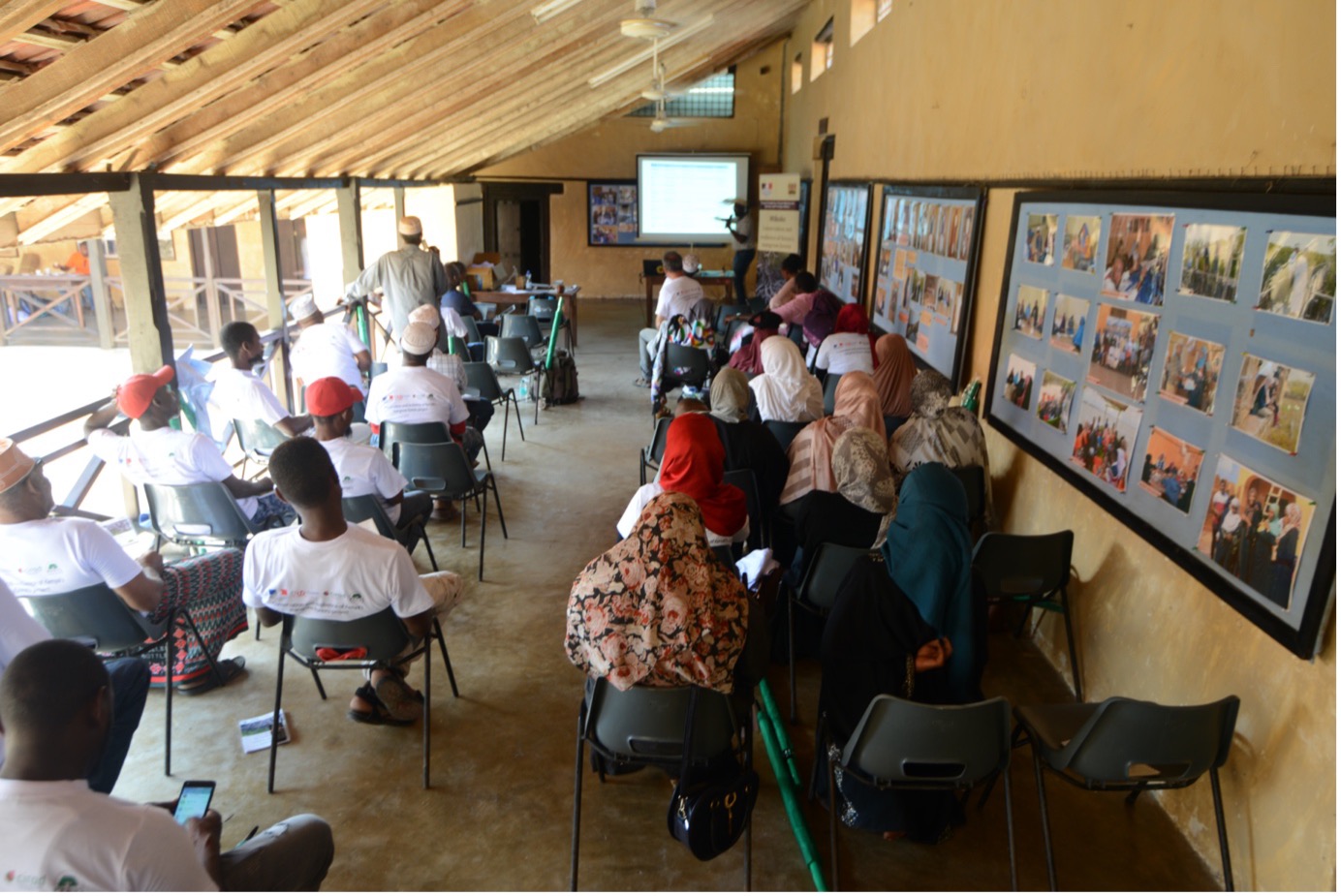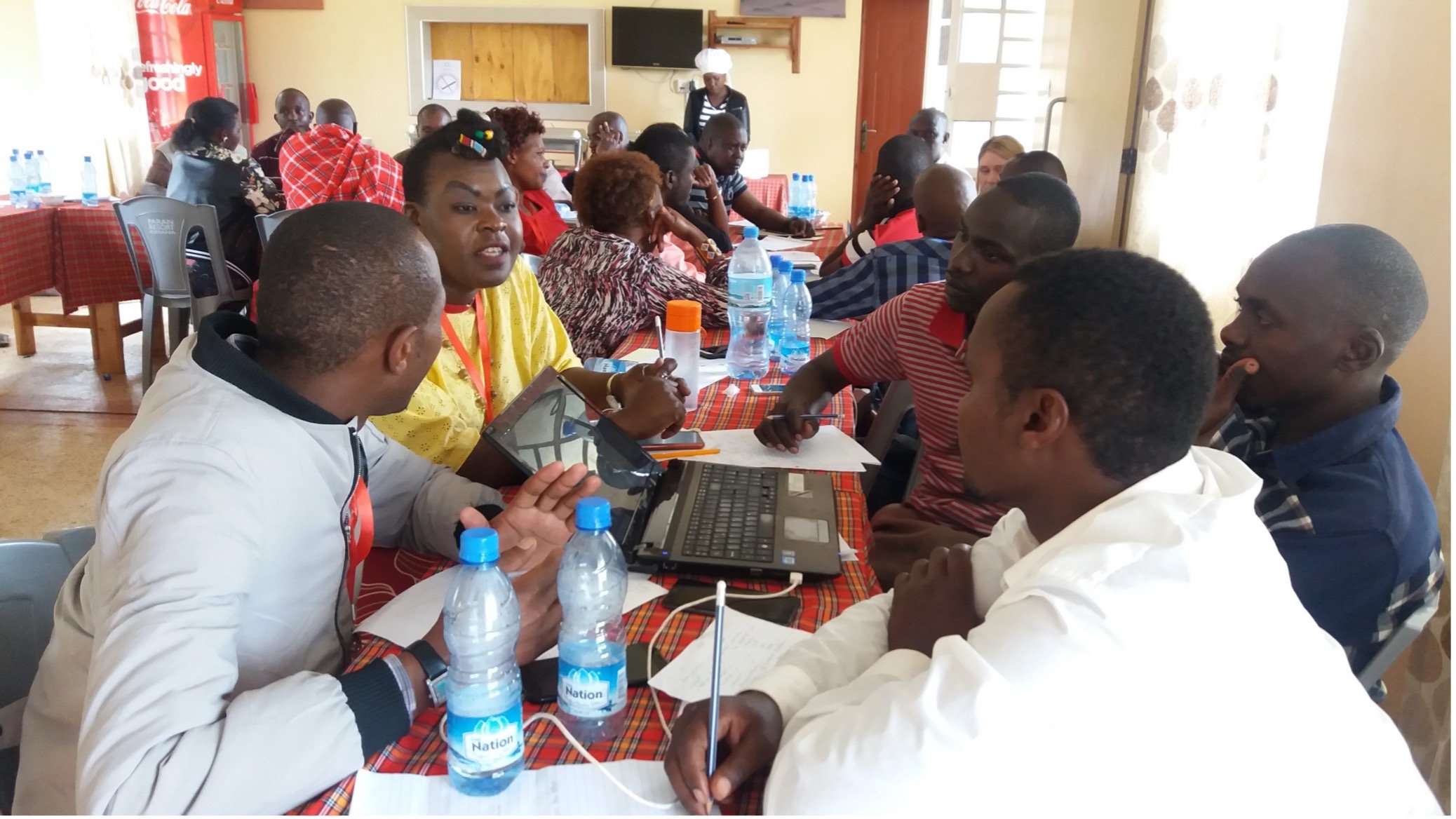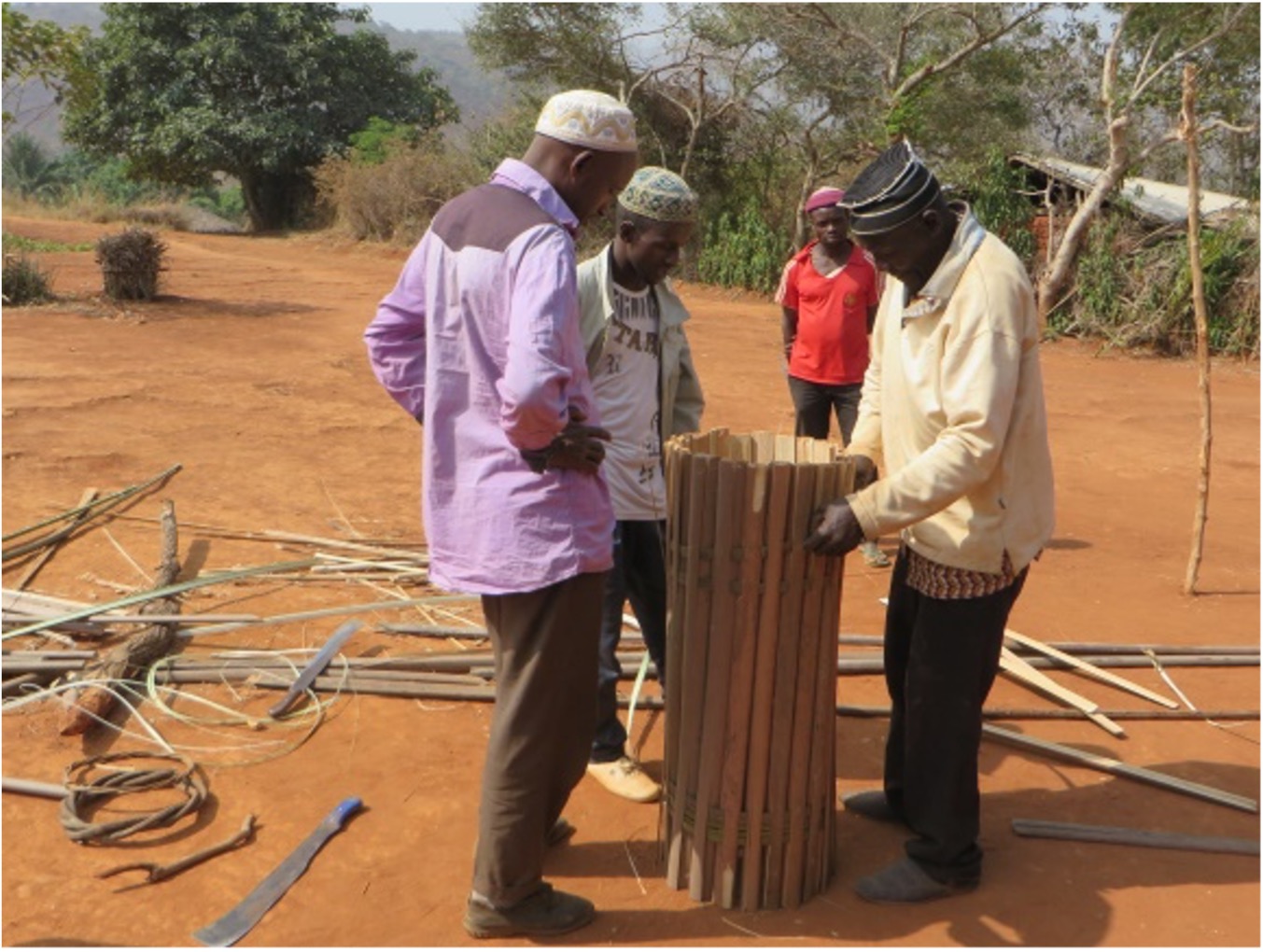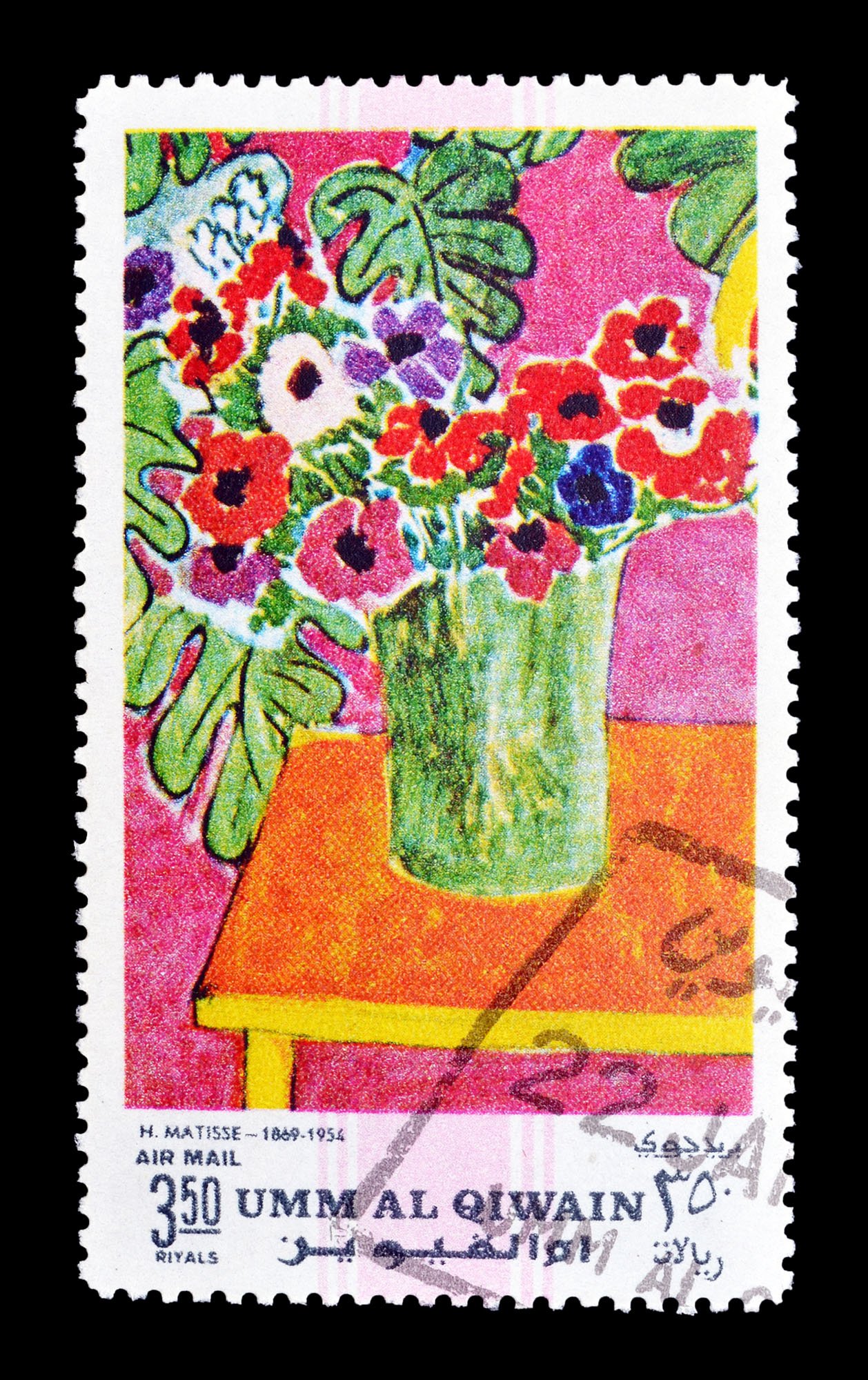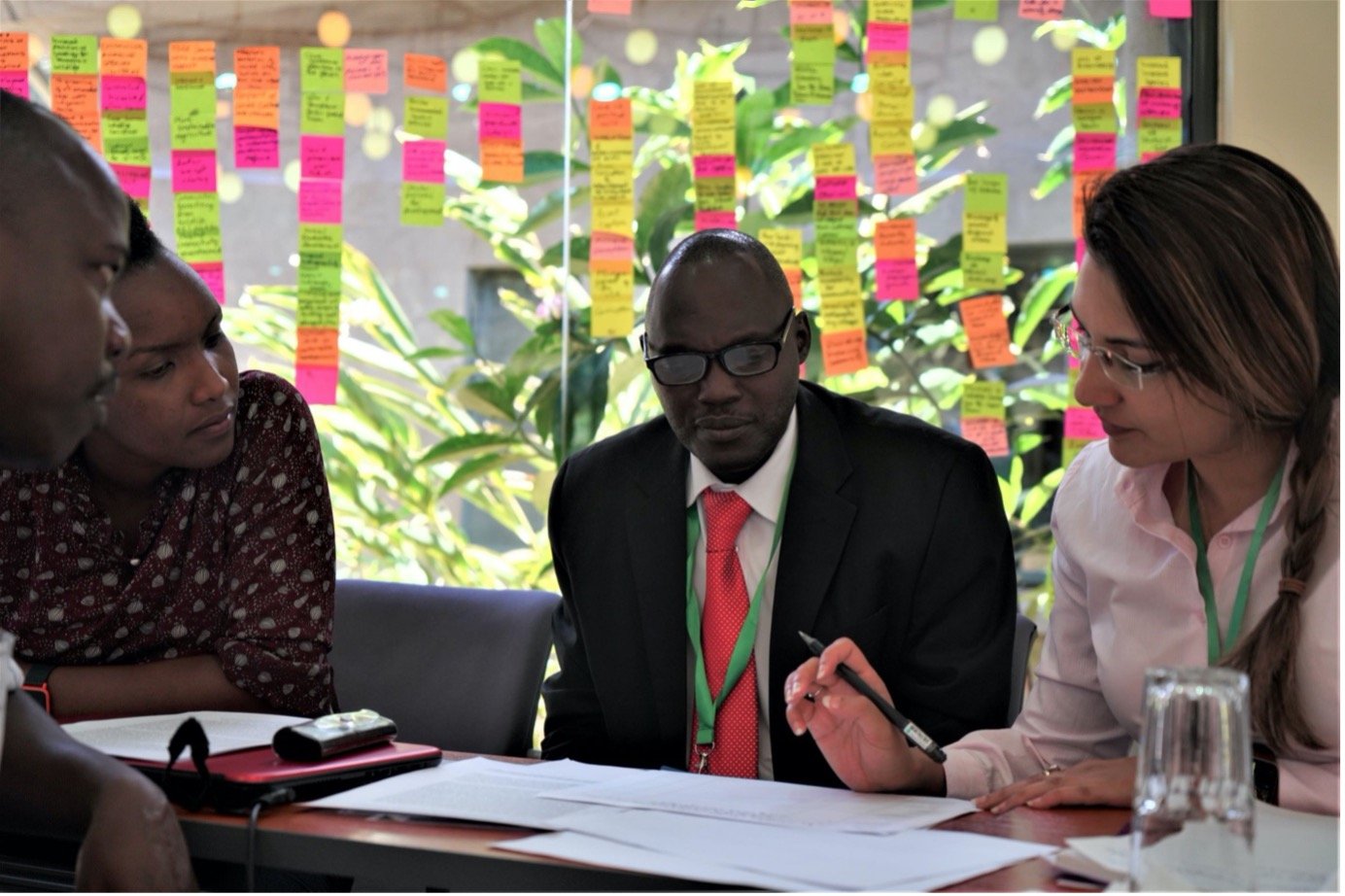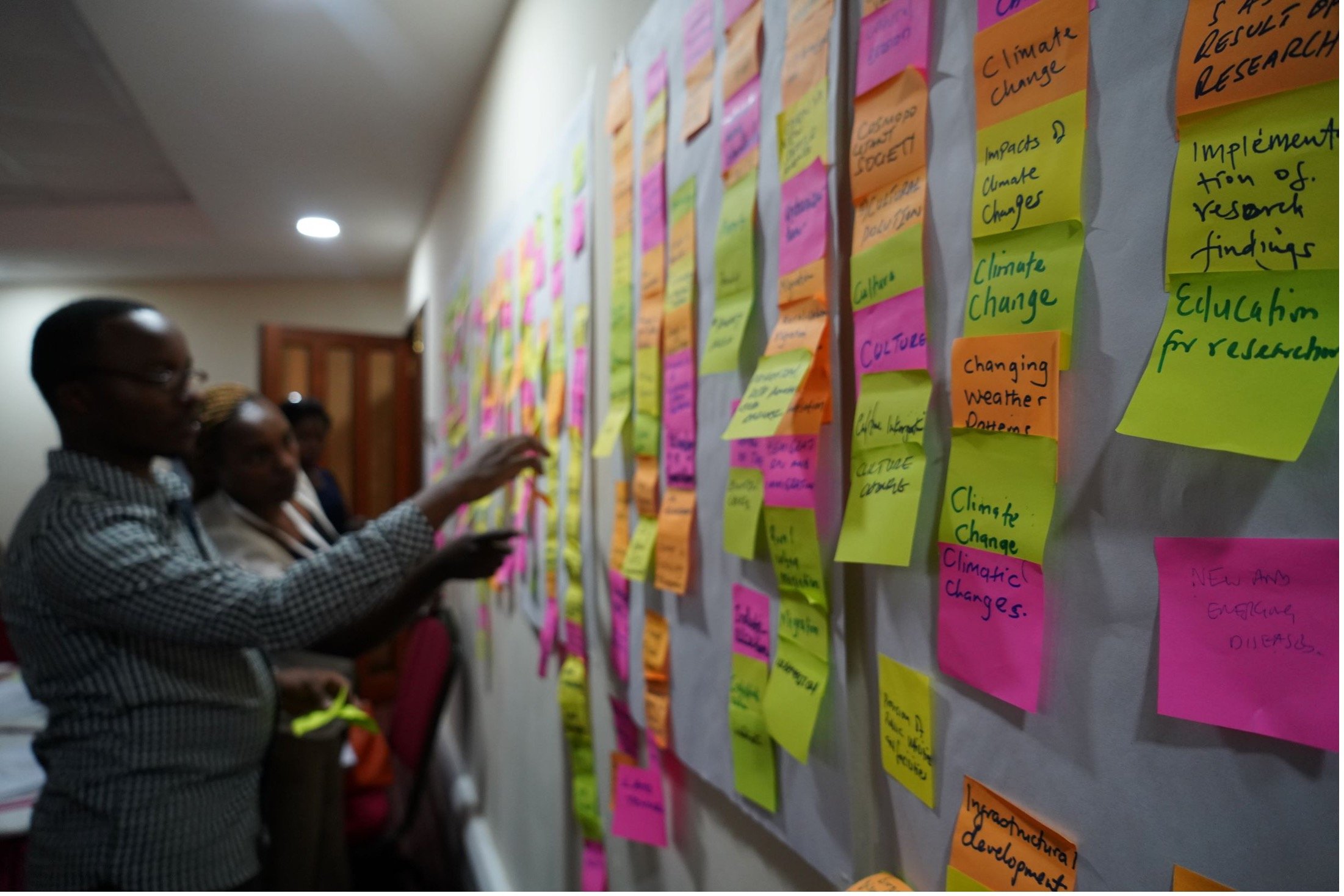Dr Aida Cuní Sanchez and Professor Rob Marchant – August 16, 2021 – 10 min read
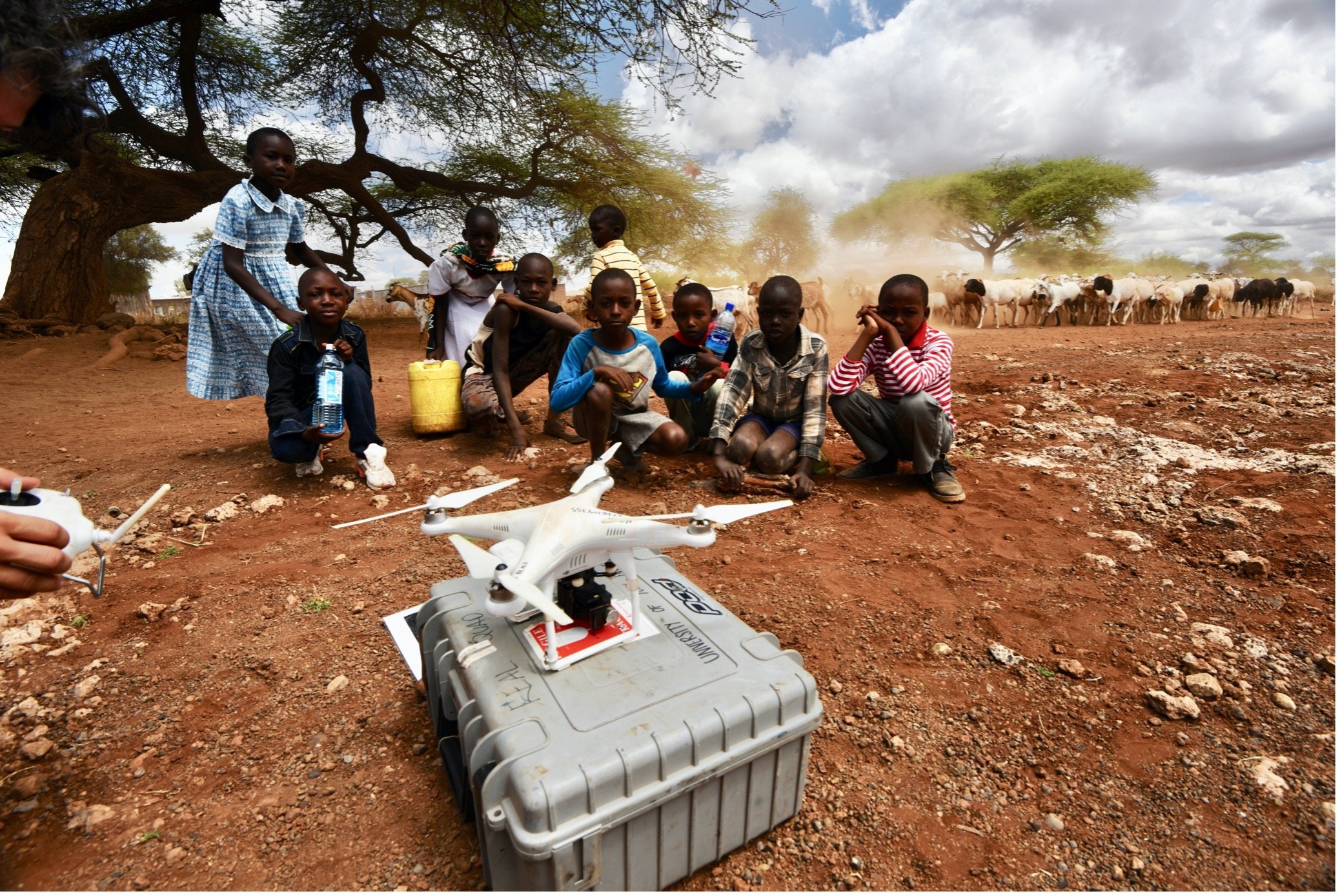
About to capture some Drone footage to investigate land use interactions between conservation and pastoralism on the northern slopes of Kilimanjaro and how this has changed over the long-term as pastoral communities arrived into Kenya.
There are so many pressing needs in the world, especially around changing climates, transformed land use and ensuing adaptive challenges. Capacity strengthening and training are at the heart of dealing with these challenges: but there are always small differences – or big ones – between theory and practice.
Experts train local scientists to set up and use equipment to gather data and then take this through several interpretative steps so it can be used, but there are often complications. Whether the equipment does not function as well as it should due to higher humidity or temperatures, or because the local context is too different to allow the measuring to work since camera traps are stolen by illegal hunters and solar panels stripped from climate stations, methods have to be adapted and the type of data that can be collected tailored to the local realities. In these scenarios, who can you reach out to for advice? Who can help fix damaged equipment? And if you do manage to obtain a large quantity of high-quality data, how do you analyse it to be able to formulate a recommendation for key stakeholders such as park managers, community groups, government organisations or policy makers?
From science to practice there are many steps.
Capacity strengthening goes beyond transferring knowledge or providing training; it is a continuous process of mutual learning and understanding, empowerment of others (scientists, practitioners, policymakers, local communities, etc.), and relationship strengthening between different actors and institutions. Every context is unique: not only in terms of climate, plants and animals, but also the communities that live there, their livelihood strategies and cultures, and the numerous actors that come together to shape the contemporary challenges and their relationships. Understanding the historical context, or lack of history, is crucial too as people’s relationship to the landscape and their biocultural heritage is fundamentally shaped through time.
In the forests of eastern DR Congo, farmers and hunter-gatherers use and value the forests differently. Ever since a National Park was created to protect the Grauer’s gorillas, farmers have still managed to benefit from their most important forest assets – water resources that are key for their crops – because tropical forests maintain local water cycles. The hunter-gatherers, however, have lost access to their main benefit – their staple foods – wild animals, wild tubers, mushrooms, edible caterpillars, and honey provided by the forests. Since they are landless, without formal education or technical skills, and very poor, these people often have no option other than to continue to enter the forest (now illegally) to feed themselves and their families. At the same time, some of these forest foods have become less abundant due to observed changes in climate, and hunter-gatherer communities have faced further challenges. Strengthening relationships between different actors and institutions has been crucial to support adaptation: scientists (from the UK and four institutions in DR Congo) documented livelihood strategies and forest usage (legal and illegal), monitored the use of forest products abundance and their relationships with climatic changes, and then started a conversation (involving all actors, including the hunter-gatherers) centred on finding solutions for sustainable forest management. Some of the institutions involved in these conservations are replicating the same ‘science with society’ approach to two other parks in DR Congo and one in Burundi. Five years along the line and the capacity strengthening is already bearing fruits.
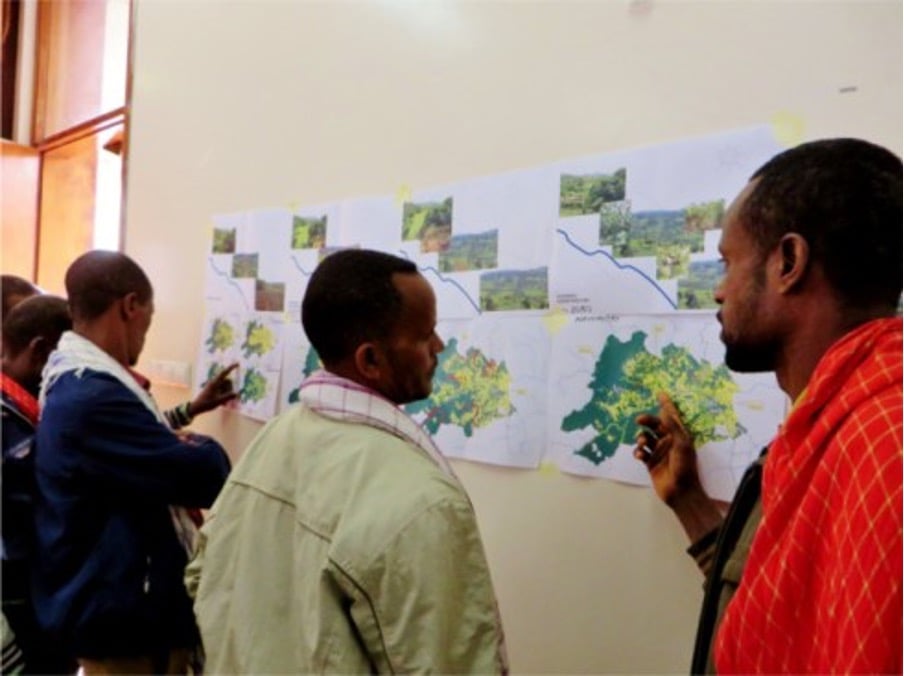
Crafting scenarios using the KESHO scenario tool at a workshop to investigate potential coffee forest futures under climate and land use change. Communities living in the Jimma Highlands of Ethiopia are exploring some of the future land use maps they helped create in an iterative and owned process from conversations to output.
Sierra Leone is another country with low capacity in the forestry sector. A civil war which lasted over a decade, combined with the Ebola outbreak from 2014-16, has weakened all sectors in this country. Here we focus on forest degradation. The Western Peninsula Forest, next to the capital, provides water to over 2 million people. Timber extraction, charcoal production, stone mining, hunting and land grabbing for house construction are just some of the threats to the continued existence of the forest – and the water it provides. Tensions are high, as fishing villages with strong traditional management and taboos around forest usage complain that it is the urban dwellers and migrants (often from the civil war or the Ebola outbreak) who are responsible for severely degrading the forest. Here again we can see that relationship strengthening between different actors and institutions has been of key importance. Apart from showing how to implement socio-economic and ecological surveys, we have started a conversation involving multiple actors, including the fishermen and urban dwellers, on finding solutions for sustainable management of the water-providing forest. Our Sierra Leonean colleagues are now replicating the approach in Kangari Hills, another ‘protected’ forest whose existence is challenged by small-scale gold mining.
The last example comes from western Cameroon. Here, it is the communities who have taken action for themselves. The Mt Oku forest, located on the second highest peak in the country, is well-known for its’ rich flora and fauna, which includes a frog found nowhere else in the whole world. The Oku people have strong cultural attachment to their forest, which is sacred to them. Among the numerous resources it provides them with is the unique white honey, which is commercialised internationally. Again, climate changes are affecting the amount of honey the bees can produce: if it is a dry year there is less of it, and if the weather is too wet then the bees abandon the colony with no honey harvest at all. In dry years, fires set by pastoralists to produce fresh grass for their cattle can catch the edges of the forest and destroy both trees and beehives. Sustainable management of forest resources that are key for local livelihoods is therefore proving to be challenging. Apart from demonstrating ways to monitor climatic changes, forest changes and honey yields, we have started a conversation involving multiple actors, including the Fulani pastoralists, centred around finding solutions for sustainable management of the unique Mt Oku Community Forest. As has been the case in other local context, more people and communities are keen to follow in Mt Mbam Fulani pastoralists are now learning how to produce high quality white honey from locally made beehives placed next to Nuxia trees, with the hope that it supports a diversity of livelihoods and protect the small forest found in the mountain – which also contains several unique species.
From these different case studies, we can see the realities of capacity strengthening and training are acute, but often highly context specific. Due to this diversity, we need to start the research process with a conversation that brings the different communities and perspectives together. These conservations are at the heart of understanding the scale of the apparent challenges, the key questions that need addressing and what are the potential solutions. These are the core foundation for the development and application of appropriate scenario tools that can be used to track potential futures that are crafted by diverse voices with space for ecosystems, wildlife and livelihoods. By identifying the multiple problems, and by supporting local ownership of potential solutions that work in a local context, capacity strengthening for linking science with society can, and does, happen.
But we still need a lot more of it.
Dr Aida Cuní Sanchez PDRA, Department of Environment and Geography, University of York and NORAGRIC Department, Norwegian University of Life Sciences; Professor Robert Marchant, Department of Environment and Geography, University of York
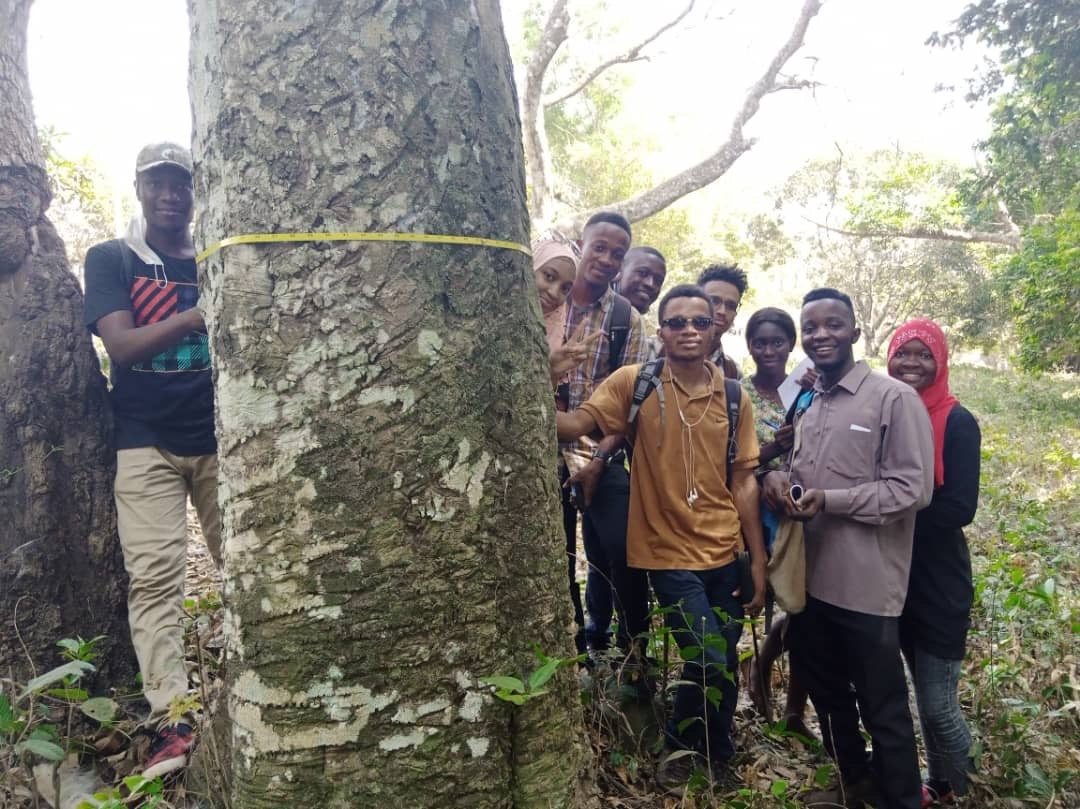
Share this via…



